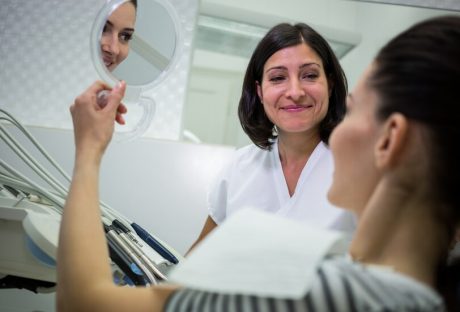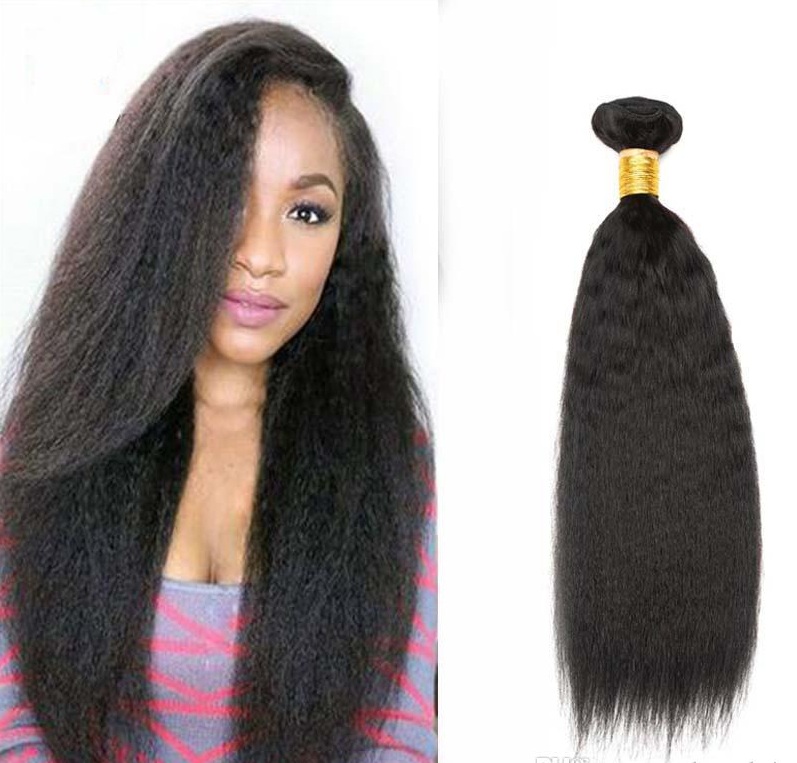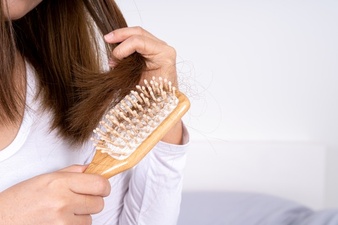Your beauty rest skincare routine is as important as the morning one so let’s learn together which are the secrets behind this daily practice.
The list of benefits behind this routine is quite a long one. To begin with, you cleanse away impurities. Throughout the day, your skin accumulates dirt, oil, pollution as well as makeup. Cleansing your skin before bed removes these impurities and, as a consequence prevents clogged pores, breakouts, and dullness.
A good beauty rest skincare routine supports skin repair and regeneration. While you sleep, your skin goes into repair mode, working to undo the damage from the day and regenerate new cells. A skincare routine before going to bed provides your skin with the necessary nutrients and hydration to support this process, allowing it to function optimally.
Moreover, this can maximize the efficacy of skincare products. Many skincare products, such as serums, treatments, and moisturizers, work best when applied at night. This is because your skin is more receptive to active ingredients while you sleep, allowing them to penetrate deeply and deliver maximum benefits.
During your bedtime skincare routine, you can address specific skin concerns. It is the perfect opportunity to target specific skin concerns, such as fine lines, wrinkles, hyperpigmentation, acne, or dryness. By using targeted treatments and products tailored to your skin’s needs, you can focus on these concerns more effectively and achieve better results over time.
Skincare routines at night boost relaxation and self-care. Any bedtime skincare routine can be a relaxing and comforting ritual that helps you unwind from the stresses of the day. Taking the time to care for your skin can also be a form of self-care, promoting feelings of well-being and enhancing your overall sense of self.
Last but not least, this routine can prevent premature aging. If you follow it consistently, you can help prevent premature aging by providing your skin with the necessary hydration, nutrients, and protection it needs to stay healthy and resilient. This can help minimize the appearance of fine lines, wrinkles, and other signs of aging over time.
What should NOT be done in a bedtime skincare routine
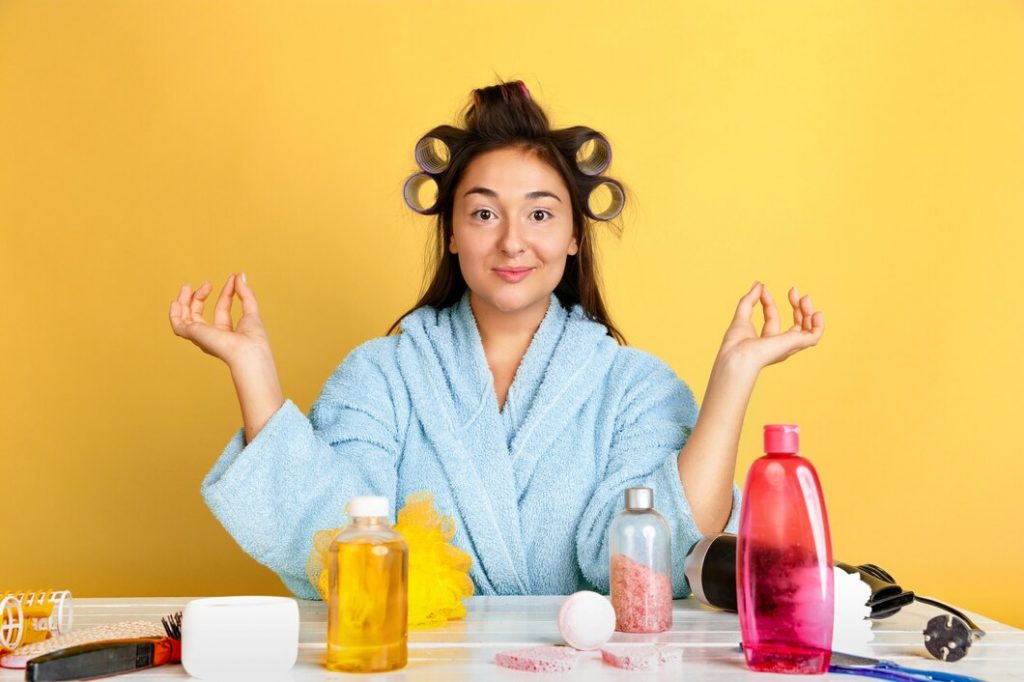
Like in any other beauty routine, there are certain things you should avoid to ensure that your skin remains healthy and rejuvenated.
Here is a list of the things you should consider in order to avoid common skincare mistakes in your bedtime routine that can help you ensure that your skin stays healthy, refreshed, and rejuvenated while you sleep.
- Do not sleep with makeup on: One of the most important things to avoid is going to bed with makeup still on your face. Makeup can clog pores, trap dirt and bacteria, and prevent the skin from breathing properly, leading to breakouts and lack of vividness. Always make sure to thoroughly remove all makeup before going to bed.
- Never skip cleansing: Even if you do not wear makeup, it is important to cleanse your skin before bedtime to remove impurities, excess oil, and environmental pollutants that have accumulated throughout the day.
- Avoid using harsh or abrasive exfoliants: While exfoliation is beneficial for removing dead skin cells and promoting cell turnover, using harsh or abrasive exfoliants can damage the skin’s barrier and cause irritation. Always use gentle exfoliants with mild ingredients, and limit exfoliation to 2-3 times per week.
- Do not apply active ingredients that increase photosensitivity: Some skincare ingredients, such as retinoids and alpha hydroxy acids (AHAs), can increase the skin’s sensitivity to sunlight. It is advisable to use these ingredients in your bedtime routine to minimize the risk of sun damage. However, if you do use them at night, be sure to apply sunscreen during the day.
- Try not to overload the skin with too many products: It is always important to nourish and hydrate the skin before bedtime, however, using too many products can overwhelm the skin and potentially cause irritation or breakouts. Just follow a simple and effective skincare routine with a cleanser, moisturizer, and any targeted treatments or serums that address your specific skin concerns.
- Avoid products with strong fragrances: Fragrances in skincare products can be irritating, especially for sensitive skin, and may disrupt your sleep. Fragrance-free or lightly scented products are always advisable to minimize the risk of irritation and promote relaxation.
My bedtime beauty routine step by step
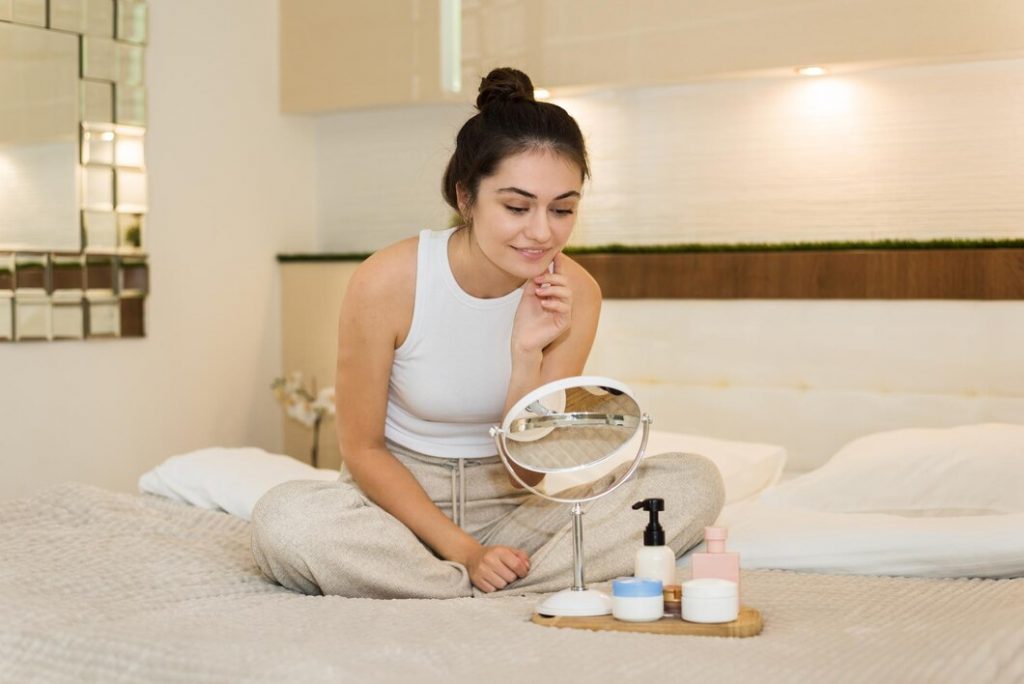
- Makeup remover: Remove any makeup with a gentle makeup remover or cleansing oil.
- Cleanser: Follow up with a cleanser to thoroughly cleanse your skin and remove any remaining impurities.
- Exfoliator ( only 1-3 times a week): Use a gentle exfoliator to remove dead skin cells and promote cell turnover for a brighter complexion.
- Toner: Use a toner to rebalance the skin’s pH and prepare it for the next steps.
- Serum: Use a serum containing ingredients like retinol or hyaluronic acid to target specific skin concerns such as fine lines, wrinkles, or hydration.
- Eye Cream: Gently pat on eye cream to hydrate the delicate skin around the eyes and reduce the appearance of dark circles or any other unwanted marks.
- Moisturizer: Apply a richer moisturizer or night cream to provide intense hydration and repair the skin overnight.
- Lip Treatment: Don’t forget to apply a nourishing lip balm or treatment to keep your lips hydrated while you sleep.
Read Also:














